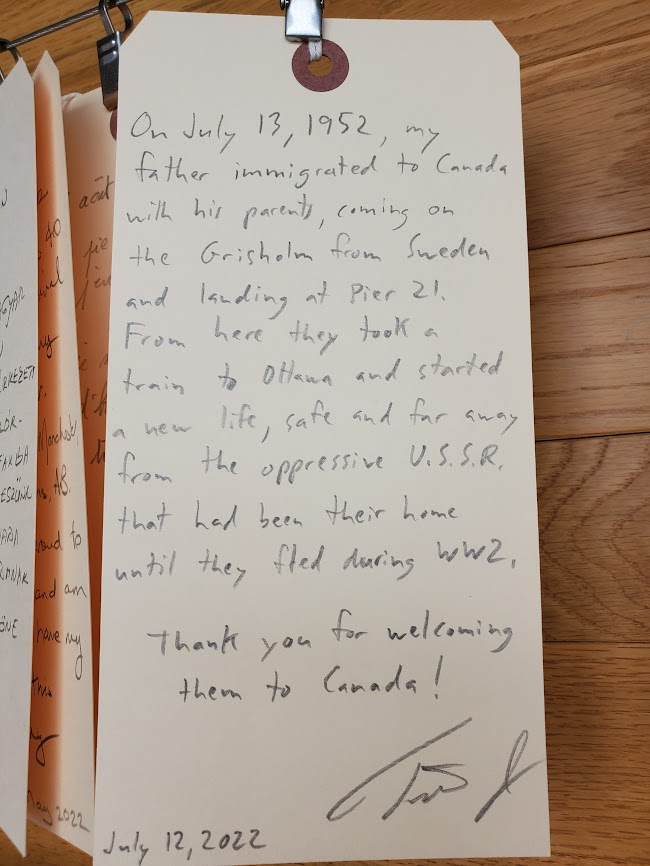History on our doorstep
I’ve always been a sucker for a good story.
Walk through the doors of the Canadian Museum of Immigration at Halifax’s Pier 21 as I did recently and you become immersed in hundreds of great stories, tales about real-life journeys of courage, hardship and resiliency. The museum’s exhibits provide rich accounts of the historic waterfront site where nearly one million immigrants arrived between 1928 and 1971.
While I haven’t done enough research yet to figure out if any of my own family members came to Canada via Pier 21, it’s inspiring to hear, read, see and learn about the many folks who made their way to this country, many sacrificing so much in their search for freedom.
After roaming the museum halls independently for a bit, I joined a guided tour led by volunteer Faith Piccolo. Pointing to rooms in a scale model of the original transit shed, she described the arrival process after newcomers left their ships. Many had travelled for a week or more to reach Canada and still had a train journey of days ahead of them.


As we moved to other exhibits, I learned that the bustling village of Pier 21 was a place where immigrants were examined, fed, nursed, sometimes housed, assisted with loans, married, even occasionally buried.
I like the fact that the Pier 21 exhibition and Canadian Immigration Hall contains places for visitors to touch, sit, smell, put stuff together and take stuff apart. I love that guests can actually contribute to the museum content, giving so much life to this important history.
The section, What Pier 21 Means to Me, tugged at my heartstrings most. At this interactive exhibit—thankfully, for me, tucked in a corner—visitors are encouraged to share their personal stories about Pier 21 by writing on luggage tags and adding them to a wall of other people’s contributions.

Not going to lie. I shed a few tears as I read dozens of the tags, each containing a personal story about an arrival at Pier 21.
I was surprised by the array of narratives, some referencing immigration to Canada decades ago, others far more recently. And apparently that’s exactly what the museum aims to do: share the ongoing story of immigration to Canada—past to present and coast to coast to coast.
The scrawled words on one tag have stayed with me since my visit. The text reads: “On July 13, 1952, my father immigrated to Canada with his parents, coming on the Grisholm from Sweden and landing at Pier 21. From here they took a train and started a new life, safe and far away from the oppressive U.S.S.R. that had been their home until they fled during WW2. Thank you for welcoming them to Canada!”

It didn’t matter that I couldn’t make out the author’s signature. The words alone will forever remind me of the importance of Pier 21 as a national symbol of Canada’s immigration heritage.
For more info on The Canadian Museum of Immigration at Pier 21, visit their website here.
PS: If you visit the museum before Oct. 16, consider stopping by the exhibit The World of Yousuf Karsh: A Private Essence. I’m a long-time fan of the famed Canadian photographer, who came to this country as an Armenian refuge in 1924. More than 100 Karsh portraits are displayed in the exhibit, images of major figures of the 20th century, from Muhammad Ali and Glenn Gould to Helen Keller and Nelson Mandela. Highly recommend!

History on our doorstep Read More »
